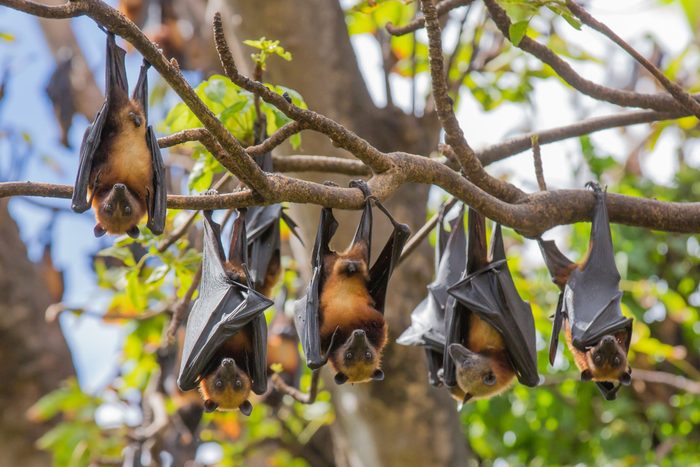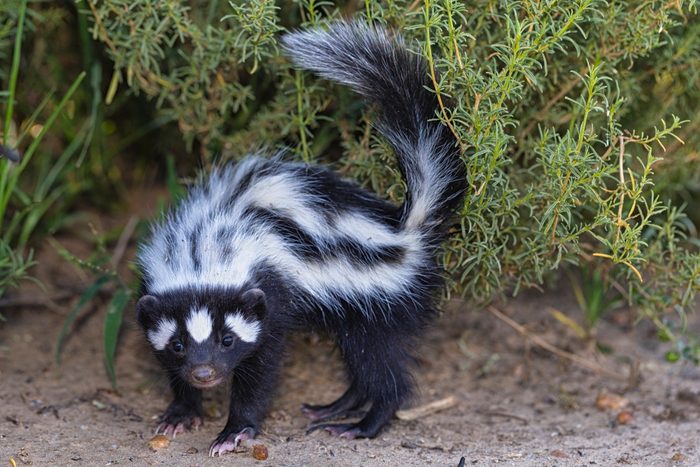Four experts defend their favorite animal pests, and explain why these helpful neighbors deserve to be a part of your yard's ecosystem.
12 Misunderstood Animal Pests in Your Yard

Understanding Backyard Pests
It’s natural to curse out a tunneling mole, or go screaming for the back door when you see a snake. But many of the animals we consider pests are actually vital to our health, our gardens and, of course, our natural ecosystems.
“Historically speaking, we have often jumped to conclusions about certain animals based on animated characters, horror stories, folk tales, and just a general lack of knowledge,” says Mary Phillips, head of Garden for Wildlife. “But not all of them are bad. They’re just misunderstood.”
Getting to know these animals better helps us understand their role in biodiversity, as well as their benefits to our lives. That may help us reshape our thinking and come up with better long-term solutions to live together more peacefully.
“When we don’t understand them, it only leads to hasty and ill-conceived attempts to resolve a perceived problem, usually using methods that are inhumane and ineffective,” says John Griffin, senior director of Urban Wildlife Programs with The Humane Society of the United States (HSUS).
So here are a few animals worth getting to know a little better.

Snakes
Most snakes are harmless to people. They’re a healthy part of your garden and yard ecosystem because they eat living things that can wreak havoc, like grasshoppers and mice. They also help distribute seeds and feed other beneficial species, like hawks.
“If a snake shows up in your yard, you’re doing something right,” says Phillips. But if you’re worried about them, lessen their numbers by clearing out any wood or rock refuse piles.

Bats
Most bats in the U.S. are insectivores, each eating hundreds or even thousands of insects every night, including mosquitos. Some are also prolific pollinators. “We have more reasons to thank bats than to fear them,” says Griffin. “They are crucial to ecosystem function.”
While they won’t actually suck your blood or get tangled in your hair, they might want to nest in your house. So seal it up properly and put up an outside bat house for them to roost in. Here are some other mitigation suggestions from HSUS.

Opossums
“Of all the animals that get an undeserved bad rap, opossums are probably at the top,” Griffin says.
Opossums are really superheroes. These docile foragers are resistant to snake venom and rabies. Our country’s only marsupial, they eat ticks, cockroaches, rats, mice, venomous snakes, snails, slugs, dead animals (carrion) and over-ripe fruit and berries.
“Opossums look a little rough but they mean well,” says Phillips. “And because opossums eat berries and other fruit, they can play a useful role as seed dispersers.”
While opossums don’t pose much danger to people, reduce encounters by keeping your garbage can lids tight.

Skunks
Another garden pest-control hero, skunks eat beetles, crickets, grubs, grasshoppers, mice, rats and moles. They also mulch up and aerate gardens by eating grubs.
“And they don’t spray unless they absolutely have to,” says Phillips. “So if you watch from a respectful distance, you might just learn to love them and their smell.”
To make your yard a less attractive den site, trim overgrown shrubs and clear debris like wood and rocks, which attract insects and other things skunks like to eat.

Crows
American crows eat carrion, grubs, caterpillars and other insects, and also help transport seeds. If you’re lucky enough to have some in your yard, they’re probably all part of an extended family that shares food and looks out for each other. Have fun watching their social interactions and dozens of distinct vocalizations.
“Crows are very intelligent, so trapping is largely ineffective,” says Steven Martin, owner of Critter Control of Northern Arizona. If you must keep them at bay, keep trash locked up, put up a scarecrow and try some of these other ideas from HSUS.

Rabbits
Cottontail rabbits like hanging out on the edges of open areas, such as yards, parks and gardens. “They’re great at recycling excess plant growth into fertilizer, and fun to watch in the yard,” says Martin.
Rabbits are pretty far down the food chain, and their numbers can rise and fall dramatically throughout the year. Because of this, Griffin says, “We should appreciate the occasional moment we might glimpse of them munching on a dandelion in our yard.”
Because rabbits eat weeds, grasses, wildflowers and vegetable plants, save your garden by putting in raised beds or surround it with a two-foot fence buried four inches deep. Here are some other ideas from HSUS.

Beavers
If you’re lucky enough to live where a beaver sets up shop, ditch your worries and get ready for one of nature’s greatest landscape transformation shows.
Beavers are a keystone species who create wetlands for countless species, as well as control flooding. They nearly became extinct by the fur trade, and their return is vital.
“Beavers have been regarded as pests due to their ability to block up irrigation canals or culverts,” says Nicholas Kilby of Think Wild. “But beavers are really important ecosystem engineers, especially in places of drought.”
If you have beavers, figure out ways to work with them rather than against them. Protect your favorite trees with trunk guards and other DIY tricks.

Coyotes
Coyotes eat mice and rabbits and, unfortunately, sometimes cats and dogs.
“Coyotes are a very controversial species,” Kilby says. “They are heavily persecuted by ranchers who have lost young livestock. They are, however, beneficial to the ecosystem as an incredibly adaptive generalist predators.”
To coexist with coyotes, keep cats, small dogs and pet food indoors. Recent science suggests that killing them does not help. Packs have evolved to birth more pups quickly when other members are killed. Human-caused deaths also disrupt their social system, causing more than just the alpha male and female to breed.

Moles
“The public’s notion of moles as a pest has everything to do with our love and fascination with a pristine, meticulously maintained monoculture of grass — our lawns,” says Griffin. “The mechanical damage they do is often not tolerated by many homeowners, which has unfortunately led to the invention and proliferation of really imaginative and diverse devices to kill moles in their tunnels.”
But moles are really beneficial. As they tunnel in search of insects, worms, grubs, centipedes and spiders, they turn, mix and aerate the soil, improving conditions for plants.
“The good news is that mole runs can be easily flattened with a foot or lawn roller,” Griffin says. You also can lessen their impact by not overwatering, which brings earthworms and other mole prey near the surface.

Badgers, Marmots and Woodchucks
Large burrowing mammals can create holes in inconvenient places, and sometimes give you a bit of lip if you pester them. But otherwise ,they’re eco-constructors.
“They disperse seeds and build tunnels, which end up being used by borrowing owls, foxes, rabbits, amphibians, reptiles and other animals,” says Kilby. They also feed predators like golden eagles, coyotes and foxes.
“Woodchucks are even more social than originally thought,” says Griffin. “If you do have a woodchuck burrow on your property, appreciate their antics for the season that they are above ground and let them eat the clover and dandelions that will sustain them through the coming winter hibernation.” HSUS also has a few tips to deal with them.




















